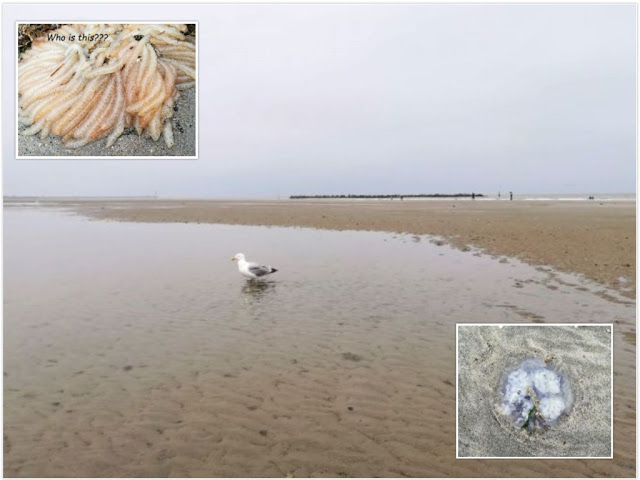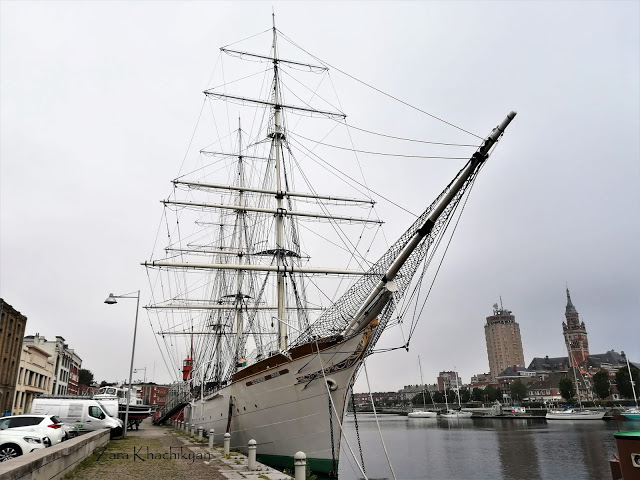Just in about 10km away from the border with Belgium, in North of France there is one of the most famous communes in France –
Dunkirk. Why famous? There are several reasons for that and here we’ll discover just some of them. So let’s start our journey in this place.
As a tourist, who loves beaches, I bet you’d go to check the coastline here, which is located in Malo-les-Bains, which is one of the neighborhoods of Dunkirk. Previously this was a separate commune but since 1969 it’s merged with Dunkirk and now is commonly called “Malo” within locals. Malo is a residential and seaside area along the North Sea famous with its long sandy beach which is also considered as “Queen of the Beaches of the North”. During the year many festivals and carnivals takes place in Malo. The buildings in front of the beach are mainly typical villas, some of which became luxury hotels where you can stay and enjoy the view to the North Sea.

And indeed, the beach of Malo-les-Bains is something special. It seems to be endless to reach the water. You’ll need to walk a lot on the sandy part of the beach, you’ll feel your feet watered, but if you want to get in the sea, then keep patient and walk some few hundred meters more. You may see a lot of shells and mussels on the sand. But you can also meet small and big jellyfishes, as well as not so much pretty unknown animals. The one I saw was quite big and looking like a monster with thousands of tentacles. I assume that was also some kind of jellyfish, but not sure… However, it didn’t look cute 😆 It was beginning of June when I came here, but it was quite cold. People were wearing jackets or light coats. But despite of all I could see some of them jogging in shorts, some youth playing inside the water (but not swimming) or enjoying the ice-cream sitting on the golden sand.

But let’s “wake up” from the dreams and continue our day in the downtown of Dunkirk city. It turns out that Dunkirk is quite old city with rich history dating back from 10th century. It has survived after WWI and WWII. During WWI in 1915 city experienced severe bombardment, including from the largest gun of the world, the German ‘Lange Max’. In October 1917, to mark the gallant behavior of its inhabitants during the war, the City of Dunkirk was awarded the Croix de Guerre and, in 1919, the Legion of Honour and the British Distinguished Service Cross. These decorations now appear in the city’s coat of arms.
During second World War the city has been again bombarded hardly and got famous because of the miraculous evacuation of British Expeditionary Force (BEF) on 1940 during French Battle. It took over 900 vessels to evacuate the BEF, with two-thirds of those rescued embarking via the harbor, and over 100,000 taken off the beaches.
You may see war memorials everywhere in Dunkirk: that could be in the parks, on the streets, in front of the shopping malls, churches or other buildings.

The main touristic area, as in almost all cities, in Dunkirk as well is the Old Town. Here you’ll find the old port of Dunkirk (Grand Port Maritime of Dunkirk) which had a big role during all the past centuries. The port started out as a center of herring fishing under the Counts of Flanders in the 11th century and only after 1350 it began to engage in commercial traffic. Today it has a passenger and freight ferry service from Dover port to Dunkirk port (as from Calais) in the North of France.
There are a lot of things to see around the port. When I was walking there, I crossed a small bridge when I heard very loud hooter. It turns out that small bridge is being diluted to open the way for a big ship. On another side of the bridge there is Port Museum in a former tobacco warehouse which features interactive exhibits on Dunkirk’s history. It has 5 locations to visit: the main Museum, 3 ships and the Risban lighthouse. Right in front of the museum you can see three outstanding floating pieces of history await. One of them was “Duchesse Anne“, which is the part of the Dunkirk Harbor Museum that explores the living conditions of cadets. This is the biggest sailship open for visitors in France. Launched in 1901 under the name Grossherzogin Elisabeth, this full-rigged three-master was used to train aspiring officers and sailors of the German merchant navy.
Another ship standing in front of the Port Museum was the lightship “Sandettié” which was a stationary ship and with its powerful light and foghorn it guided other ships through the dangerous sandbanks off the coast of Dunkirk.
And the third one was the barge Guilde where you can discover the different steps of the evolutuin of 20th century waterway transport.
Just a little bit far from ships, in about 5 minutes of walk, you can visit The Risban Lighthouse built in 1842. If you climb it up, from the height of 60 meters you can admirethe breathtaking view of the city, its harbor and the North sea.
 |
| Duchesse Anne |
Coming back in the same way, crossing the same bridge and walking few minutes, you’ll see a big shopping mall “Centre Marine” which also has a park behind “Park de la Marine” where you can see some more pieces of War memorials. Not very far from here there is a square in the middle of which you can see one of the most remarkable statues in Dunkirk. It’s the statue of French naval commander and privateer Admiral Jean Bart who had a big role in history of Dunkirk. He was a naval officer, renowned for his skillful and daring achievements in the wars of Louis XIV. His knowledge of every detail of the coast enabled him to command a French fleet of small privateering vessels with great success. He took 81 prizes in six battles and was rewarded by Louis XIV with the rank of lieutenant. In the War of the Grand Alliance (1689–97) he was taken prisoner by the English but escaped from Plymouth and rowed for 52 hours to the French coast. Promoted to captain, he commanded the Alcyon at the Battle of Beachy Head (1690) and afterward a division of ships at Dunkirk. Bart defended Dunkirk during the English attacks of 1694–95. In June 1696, when France was facing famine, he engaged a Dutch squadron off the coast of the Netherlands and captured a convoy of 96 ships loaded with Russian and Polish wheat. For this exploit, the king made him a member of the nobility. Jean Bart’s memory has been preserved in the French Navy, some 27 ships being named for him since his death.The town of Dunkirk has honored his memory by erecting a statue and by naming a public square after him. And so the name of Jean Bart lives on.
On the other side of the street you’ll see a beautiful Catholic church with Gothic architecture, where Jean Bart is buried. This is the 15th century Saint Eloi Church, known for WWII bullet holes on parts of the facade and is classified as a historical monument. Connected to the belfry in front of it, the church was then nicknamed “the cathedral of the sands”. The belfry has been detached in 1782. Today it has a tourist information center on the first floor, where everyone is happy to tell you about the city and show all important places on the map you shouldn’t miss. If the entrance is open, you can also go to the top of it and have another great view to the city. The church of Saint Eloi contains many movable and liturgical treasures. This is a huge an stunning church that is a must visit in Dunkirk.
 |
| Saint Eloi Church |
And the last but not least attraction to be visited here is the Town Hall, which dates from the early 20th century, and is listed as World Heritage by the UNESCO, along with the 15th-century belfry. It’s seen even from the port, if you stand next to the “Duchesse Anne” ship, you’ll see a red stoned building. In my opinion it is very similar to the Town Hall in Calais, just with one difference: the tower is in the middle of the building here.
If you are in Dunkirk and have more time, you can visit also the “Fine Art Muesum” which is well recommended by locals. For that you’ll need to walk a little bit more, maybe around 20-30 minutes from the Town Hall. Or you may take a public transport. By the way, starting from September 2018, Dunkirk’s public transit service introduced free public transport, thereby becoming the largest city in Europe to do so.
North of the France is well known also for its small local markets, which are open in some of the small towns, usually on some specific days of the week. One of those is the market in a small market town halfway between Calais and St. Omer in the Pas-de-Calais region of France, Audruicq. Every Wednesday morning there is a street market hold in the main square. You can find cooked meats and spit roasted chickens, plenty of seasonal fruit and vegetables. But except food, the market also sells clothes leather bags, as well as live animals and birds.
With this my day in Dunkirk is finished. But I still have some more stories to tell you about North of the France. See you next time in a new place 😉





